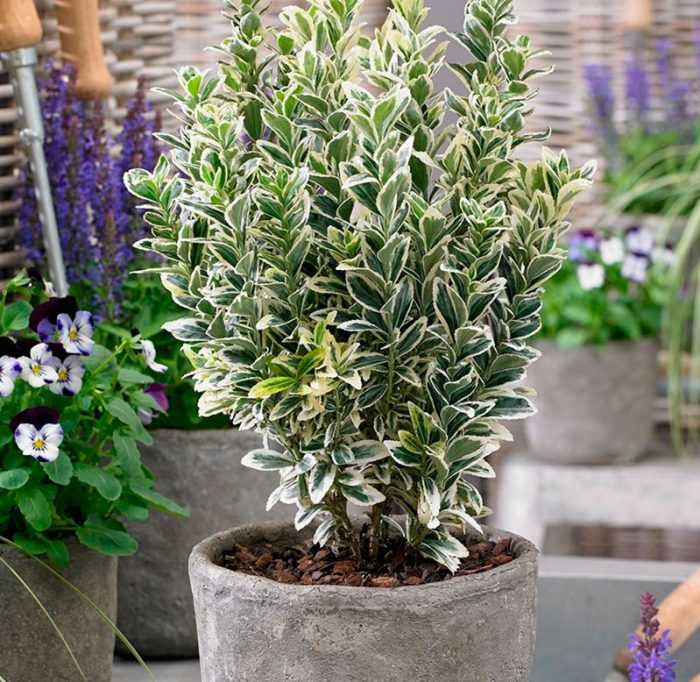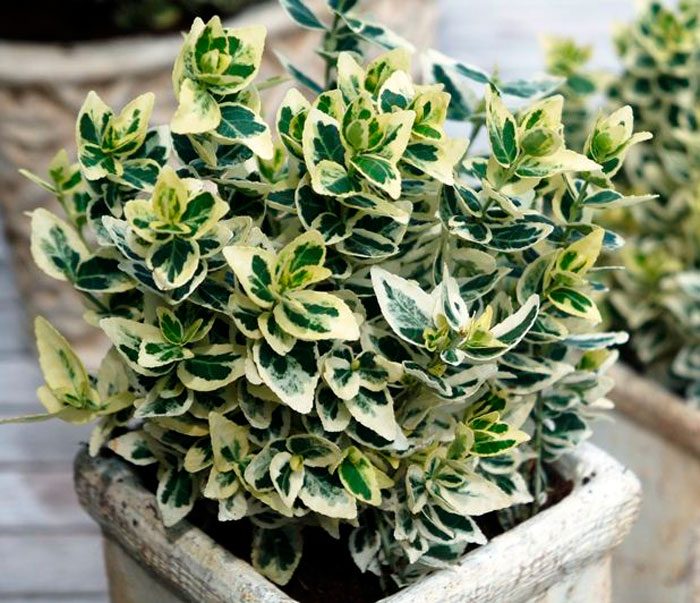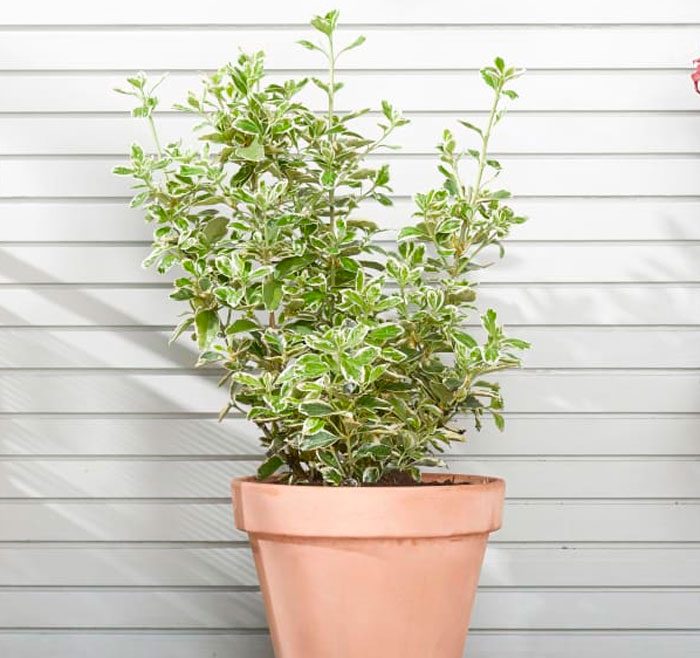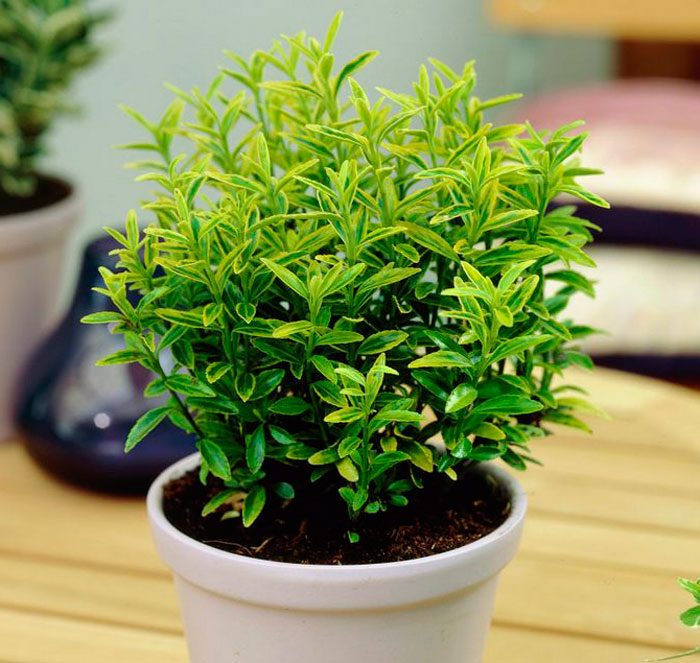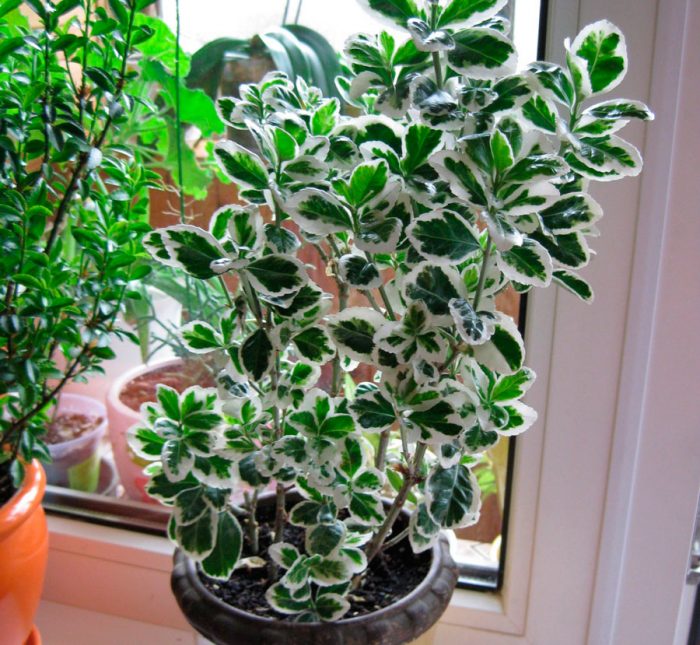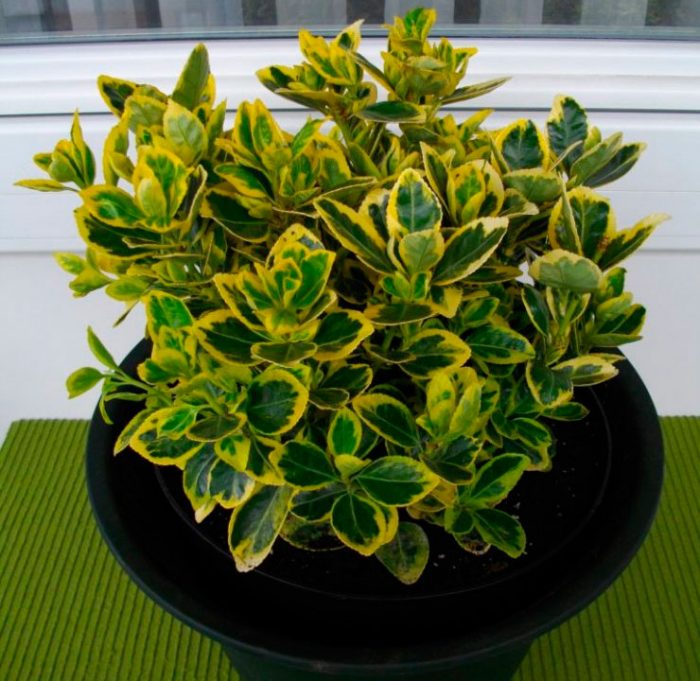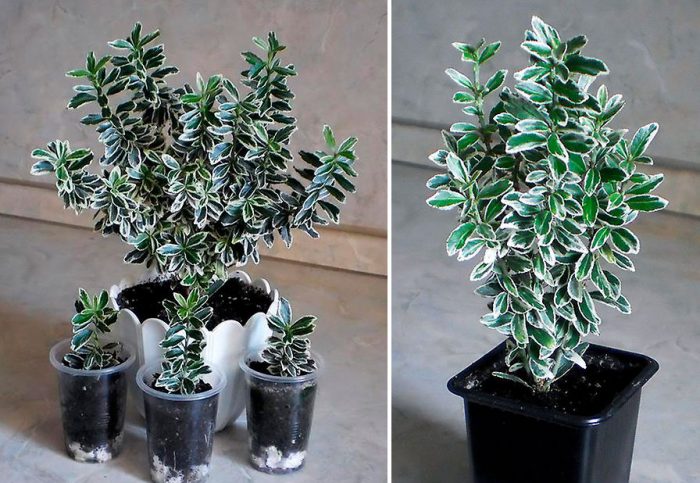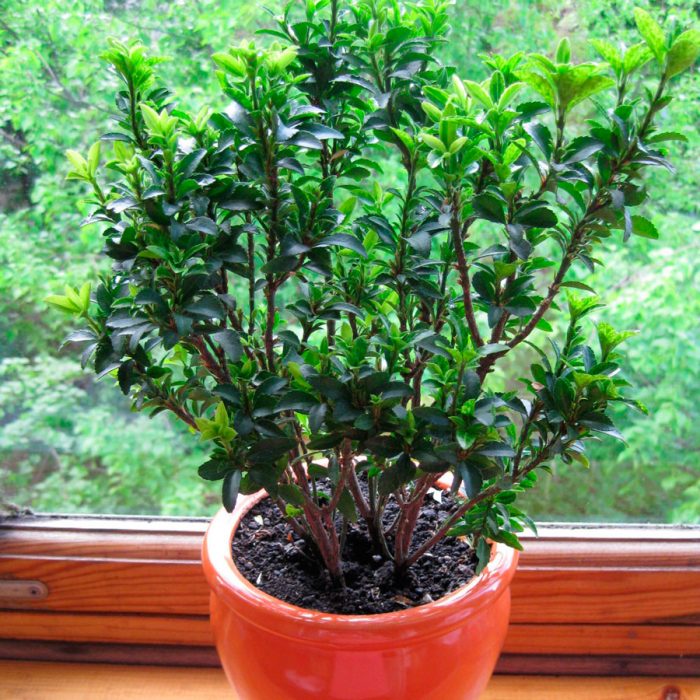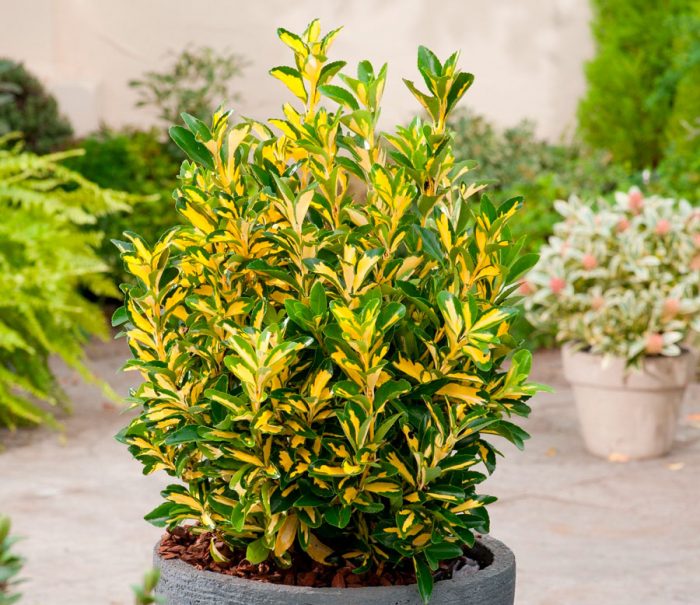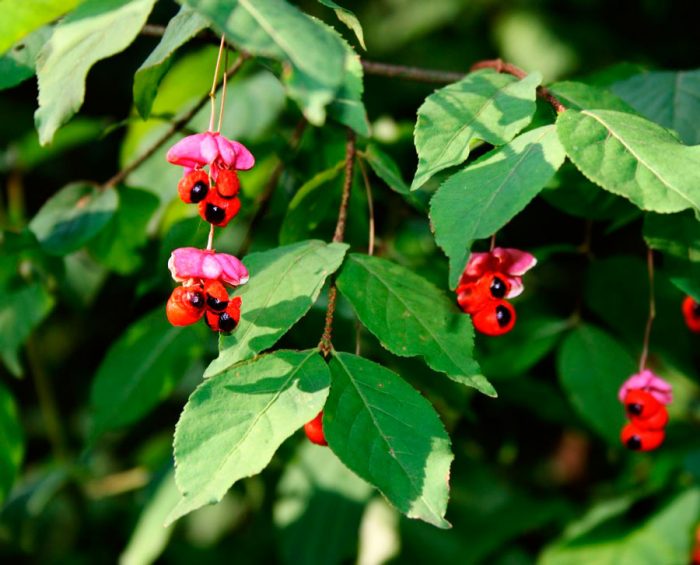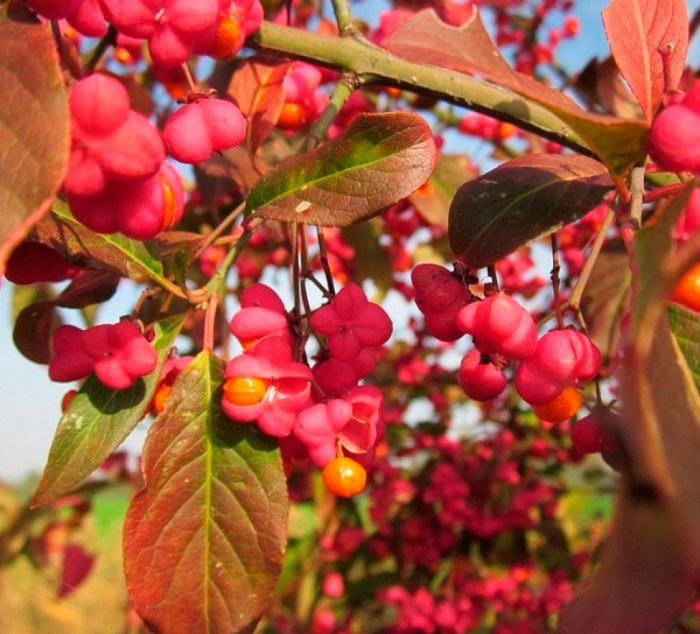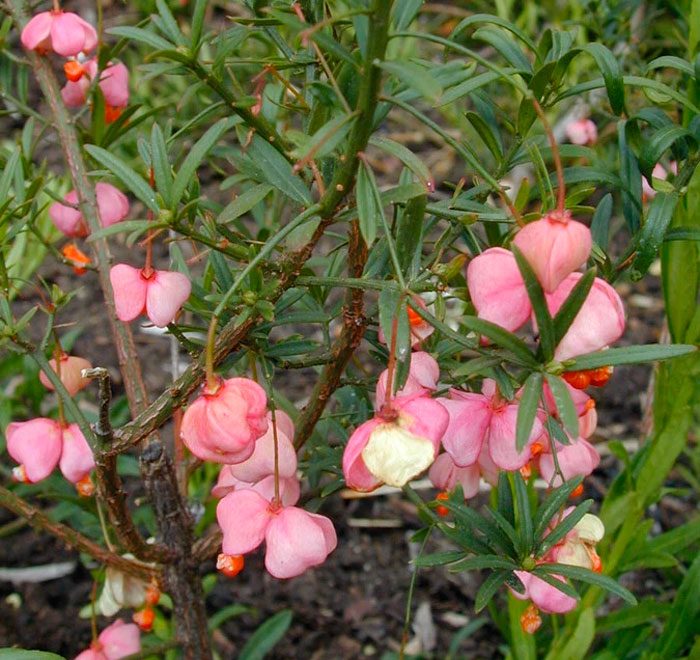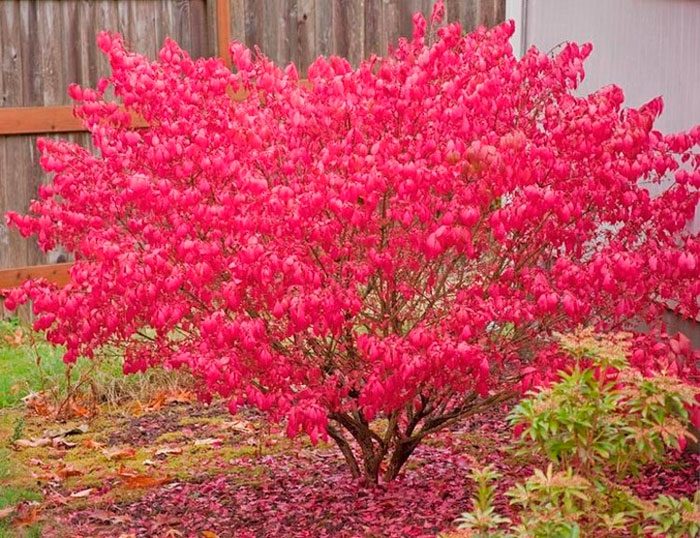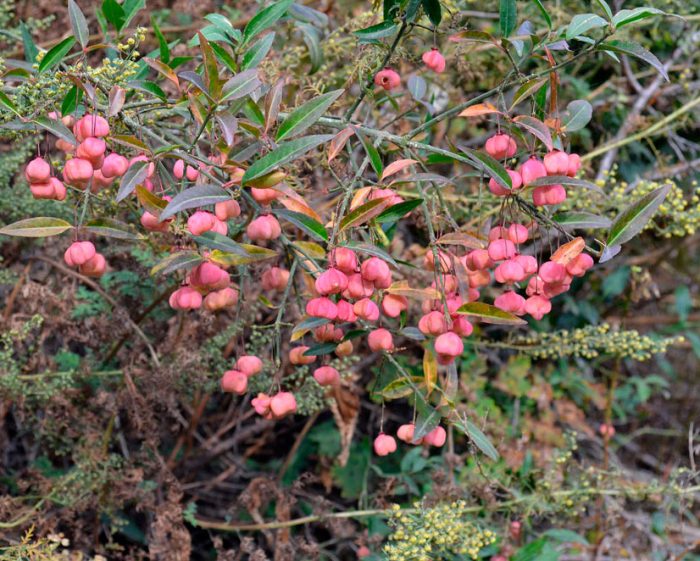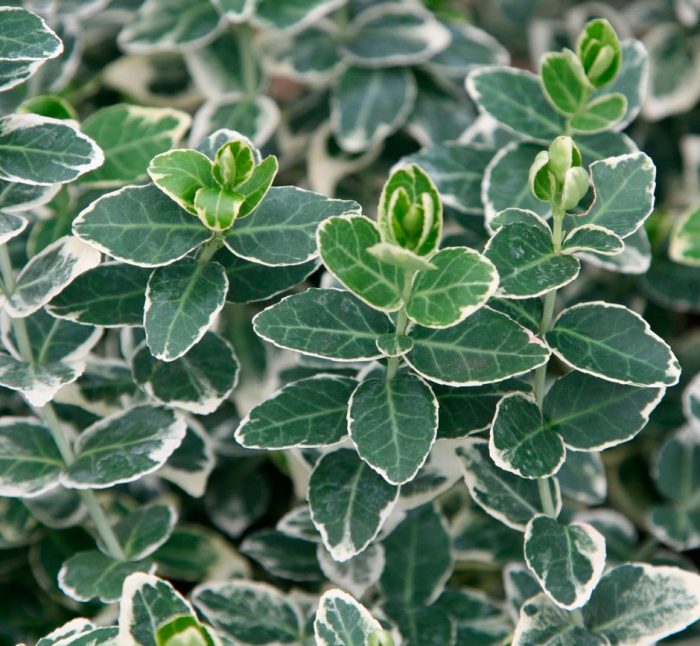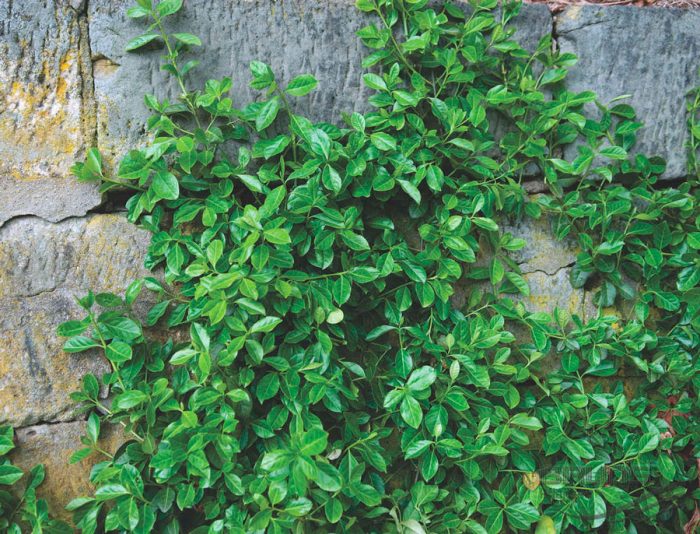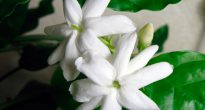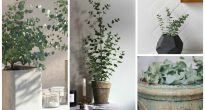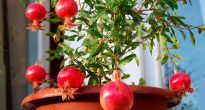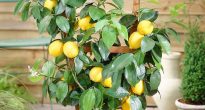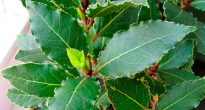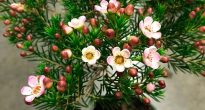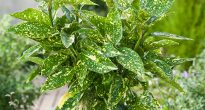The euonymus plant is a member of the euonymus family. This genus includes about 190 different species. In nature, some species can grow up to 6–7 meters in height, but a bush grown indoors is much shorter. This genus is represented by deciduous and evergreen trees, as well as shrubs.
Euonymus grows quite well at home. If transplants and pruning are carried out in a timely manner, then the plant does not get sick because of them. Such a shrub belongs to shade-loving plants, and therefore it is quite possible to grow it on the northern windowsill. Indoor euonymus is cultivated by flower growers as an ornamental deciduous plant, moreover, at home, its flowering can be seen extremely rarely. It has a spectacular lush crown, and the color of the foliage may differ in different varieties.
This plant contains poison, but despite this, it is widely used in alternative medicine, while all its parts are considered curative, namely: bark, leaf plates, seeds and stems. This shrub has many useful properties, for example: diuretic, expectorant and anthelmintic. Shoots and roots of euonymus are used to obtain gutta-percha. In European countries, it is warty and European euonymus. Japanese euonymus is most popular among flower growers.
Content
- 1 Brief description of cultivation
- 2 Spindle tree care at home
- 3 Reproduction methods
- 4 Possible problems
- 5 Types of spindle tree with photos and names
- 5.1 Japanese spindle tree (Euonymus japonicus)
- 5.2 Warty euonymus (Euonymus verrucosus)
- 5.3 European spindle tree (Euonymus europaeus)
- 5.4 Dwarf spindle tree (Euonymus nanus)
- 5.5 Winged Euonymus (Euonymus alatus)
- 5.6 Semenov's euonymus (Euonymus semenovii)
- 5.7 Fortune's eonymus (Euonymus fortunei)
- 5.8 Forchun's euonymus rooting (Euonymus fortunei var. Radicans)
Brief description of cultivation
- Bloom... In the last spring or early summer weeks.
- Illumination... In the morning or evening, the bright light of the sun, and in the afternoon - a bright, but diffused light.
- Temperature regime... In the warm season - from 24 to 25 degrees, and in the autumn-winter period - no warmer than 10 degrees.
- Watering... During the growing season, water should be very abundant so that the soil mixture in the pot gets completely wet. Moisten the substrate only after it dries ½ part in depth. In the autumn-winter period, the soil mixture is moistened moderately.
- Air humidity... On hot days, it is recommended to moisten the bush from a spray bottle with warm water or regularly shower it.
- Fertilizer... In the spring-summer period, the bush is fed once every 30 days, for this they use a complex mineral fertilizer. In the autumn-winter time, the plant does not need feeding.
- Dormant period... It begins in late autumn and ends in the first days of spring.
- Transfer... Until the plant reaches the age of five, it is transplanted regularly once a year. An older euonymus is transplanted only if necessary, when its root system becomes cramped in the pot, approximately once every 2 or 3 years.
- Soil mixture... Sand, turf and peat (2: 6: 1). You can also use a substrate of the following composition: humus, leaf and sod soil, peat (1: 1: 2: 1).
- Reproduction... Cutting, seed method and dividing the rhizome.
- Pests... Spider mites and aphids.
- Diseases... Problems with euonymus can begin due to improper care, for example: too bright or very poor lighting, excessive watering and dry air in winter.
- Properties. The fruit contains poison!
Spindle tree care at home
Illumination
The plant needs a lot of light throughout the year. However, it is quite possible to grow it on a north-facing windowsill, but it should be borne in mind that some species will grow worse there, while others will grow better. The bush needs a lot of sunlight, it will be better if in the evening or in the morning direct rays of the sun will fall on its foliage. When growing variegated forms, it is worth choosing the most illuminated place for them, since due to poor lighting they can lose their spectacular color.
Temperature regime
In order for the bush to grow and develop within normal limits, you should take care of a suitable air temperature. In the summertime, in the room where the plant stands, it is better not to allow heat (above 24-25 degrees). For the winter, the plant is removed to a cool place (from 8 to 10 degrees). When wintering in warmth, indoor spindle tree often sheds all its foliage. For the winter, it can be removed to an unheated balcony, but then make sure that the air temperature does not drop too low.
Watering
For irrigation, use water that has settled very well (not less than 12-24 hours). During the growing season, which is observed in spring and summer, watering should be abundant so that the earthen lump in the container can get completely wet. However, euonymus is watered only after the soil mixture in the pot dries out to a depth of ½ part. In winter, watering should be more moderate and make sure that there is no stagnation of liquid in the root system.
Air humidity
Euonymus can grow normally at any level of air humidity, however, on hot days it is still recommended to moisten it with a spray bottle. Among other things, regularly moisturizing the foliage will reduce the chances of harmful insects settling on the plant. In order to prevent a white bloom from forming on the surface of the leaf plates, water to moisten the bush is taken in advance boiled or passed through a filter. In the summer months, a warm shower will be useful for the shrubs, however, during the procedure, it is recommended to cover the surface of the substrate in the container with a film.
Fertilizer
The bush should be fed only during the spring-summer period, and they do it regularly 1 time in 30 days. Before feeding, it must be watered. For this procedure, you can use a complex mineral fertilizer for ornamental deciduous plants in the concentration indicated by the manufacturer.
Forming and pruning a bush
To maintain its spectacular appearance, the bush should be pruned throughout the year. To do this, remove all injured and fading shoots.All weak branches are also cut out, as they take away strength and nutrients from the bush. Pinching of young shoots is carried out in March, thanks to this the crown will be more lush and beautiful. The euonymus can be shaped into almost any shape you wish. It can be formed like a shrub, in this case many branches will depart from its root, and the more there are, the more effective the plant looks. It can also be formed as a standard tree: in this case, the bush has 1 trunk bare from below, which is decorated with a lush crown on top. To make the crown effective, timely and correct pruning is used for this, and to awaken dormant buds that give new shoots, they carry out a systematic pinching. With proper formation and certain knowledge, you can get a spectacular bonsai from a bush.
Spindle tree transplant
Until the plant is 5 years old, it is transplanted every year into a new container, which should be slightly larger than the old one. More mature bushes are transplanted 1 time in 2 or 3 years, but only when the root system becomes cramped in the pot. For transplantation, a soil mixture consisting of peat, sand and sod soil (1: 2: 6) is used. Also for this purpose, you can use a substrate, which includes leaf and sod soil, as well as humus and peat (1: 2: 1: 1). Do not forget to make a good drainage layer at the bottom of the container; broken brick or expanded clay is suitable for this. This is necessary in order to avoid stagnation of liquid in the root system, which can greatly harm the bush, especially in winter.
Properties
This plant contains poison! Or rather, it is contained in its fruits. But despite this, euonymus is very widely cultivated in indoor conditions. If there are small children in the house, be sure to tell them that the fruits on the bush should never be eaten. To get poisoned by fruits, an adult healthy person will need to eat them in large quantities, but pets and a small child will need much less fruits for this.
Reproduction methods
Reproduction by division
An euonymus growing at home can be divided into several parts, but only if it has an overgrown root system. The rhizome is divided into several parts very carefully, trying not to injure the roots. Delenki are planted in individual flower pots, and they need to be looked after in the same way as for adult bushes.
Cuttings
For reproduction of the shrub, young shoots are used, cut in the first half of the summer period. For cutting cuttings, young, non-lignified shoots are used, each of them should have 1 or 2 knots, and in length they should reach about 60 mm. Take a low container and cover the bottom with a layer of sand. From above it is covered with a soil mixture consisting of leafy, sod and humus soil, and also sand (1: 2: 1: 1). Rooting of cuttings takes about 2 months. All this time, they should be warm under a transparent cap, and do not forget to ventilate and moisten them in a timely manner from a spray bottle.


Watch this video on YouTube
Growing from seeds
If you have the time and desire, then indoor euonymus can be grown from seeds. Before sowing, the seed is subjected to stratification, as a result of this procedure, the seeds will be able to shed a very dense skin. The seeds are mixed with coarse sand and kept at an air temperature of 10 to 12 degrees for three to four months. But the stratification does not end there, there is also the second stage: all the opened peel is removed from the seed material, and then they are placed in a cold place (about 0 degrees, but not warmer than 4 degrees), where they will stay from 2 to 3 months. Further, the seed is disinfected, and experts advise, for this, use a solution of potassium manganese (5 grams per 1 liter of water).Fill a small container with a soil mixture consisting of sand, humus, sod and leafy soil (1: 2: 1: 4). Sow seeds into it.
If you decide to cultivate a shrub in the garden, then it can be transplanted to a permanent place only in the third year. Until this happens, in the autumn-winter period the seedlings must be mulched, and during the growing season - water and feed on time. If the bush is cultivated at home, then the seedling will need annual transplants, and the pot is changed each time to a larger one (the old pot should be only slightly smaller than the new one).
Possible problems
If a spindle tree growing at home is not properly looked after or if it is not provided with optimal conditions for growth, then the following problems may arise with it:
- The variegated foliage has lost its pattern and turned green... This can happen due to overly poor lighting. Variegated varieties require a large amount of bright diffused light, they can even be briefly placed in direct sunlight (in the evening or in the morning).
- Yellowed and flying leaves... Most often, this problem arises if the shrub is watered very abundantly. This may cause rot on the root system. To remedy the situation, start watering the bush correctly.
- Folding and drying of the tops of the leaf plates... This is most often due to excessively bright lighting. Also, because of this, foliage often becomes dull and faded.
- Flying around foliage... This occurs in winter, when the room is too warm and the air is too dry.
- Pests... Most often, aphids settle on the euonymus, but spider mites can also harm it.
Types of spindle tree with photos and names
Japanese spindle tree (Euonymus japonicus)
It is this species that is usually cultivated at home, while others are grown outdoors or in the garden. Japan is considered the birthplace of such a plant. This species, growing indoors, usually reaches a height of no more than 100 cm. The length of naked leathery dark green leaf plates is about 80 mm, their front surface can be shiny. The foliage is obovate, and the upper part is rounded. Greenish-yellow flowers are collected in 15-30 pieces in umbrellas. Each flower is about 10 mm long. The bush blooms in the first summer weeks.
Thanks to the labor of breeders, a large number of forms of Japanese euonymus were born. If the bush hibernates in a room where there are working heating devices, then it must be systematically moistened from a spray bottle. For wintering, it is better to transfer it to an unheated room, which should be well lit. This species belongs to shade-tolerant plants.
Warty euonymus (Euonymus verrucosus)
In nature, the species can be found in the temperate latitudes of Europe and Asia. It is represented by trees (about 6 meters high) and shrubs (about 2 meters high). Brownish-black warts can be seen on the surface of the green stems. Flowering is observed only in the wild in the last spring or first summer weeks. The fruit is a pinkish-red boll, which ripens at the end of the summer or at the beginning of the fall. Inside the capsule are gray or black seeds, which are ½ part covered by an orange or pale red testis. In culture, this species is most popular, but it is most often grown in the open field. It is distinguished by its winter hardiness, shade-tolerance and undemanding care. Cultivated either in one bush or in groups.
European spindle tree (Euonymus europaeus)
This species has become widespread in Europe. Most often it is represented by trees, but there are also shrubs, the plant height is about 6-7 meters. While the shoots are young, they are green, but over time their color changes to black. Cork growths form on the surface of the stems.Ovate leaf plates sometimes expand towards the apex and sometimes towards the base. Leathery dense bare leaves are dark green in color, about 10-11 centimeters long. Flowering is observed in the last spring or first summer weeks. Greenish flowers are collected in several pieces in not very large inflorescences, peduncles are short. The bush blooms for about 20 days. The fruit is a four-leafed box of reddish or pink color, the seeds are covered with orange seedlings.
This species grows well in urban conditions and is distinguished by winter hardiness and drought resistance. It tolerates formative pruning and is often grown as a hedge. It is recommended to choose sunny places for this type. There are decorative forms that are more demanding in terms of care and growing conditions, in comparison with "wild" relatives.
Dwarf spindle tree (Euonymus nanus)
This species comes from the temperate latitudes of Europe and Asia. It is represented by an evergreen perennial shrub. The upward stems are about 100 cm long, while they are young, their color is green, but after a while it changes to gray. There are many warts on the surface of the shoots. The length of the narrow lanceolate leaf plates is about 40 mm, their seamy surface is pale-gray, and the front surface is greenish. On peduncles 20 mm long, green or red flowers are formed, which can be single or collected in bunches of 2 or 3 pieces. The fruit is represented by a capsule, inside of which are dark red seeds, covered by ½ part with orange seedlings. This very spectacular look is most often found in parks and gardens. For its reproduction, the method of dividing the bush, cuttings, seed method and rooting of shoots are used.
Winged Euonymus (Euonymus alatus)
Or sacred euonymus (Euonymus sacrosanctus). This is a Far Eastern species, in nature it is found in China, Korea and Japan. The height of such a highly branching shrub varies from 2 to 2.5 meters. The species is also represented by trees, which are about four meters high. The tetrahedral winged branches are still young - green, but over time they turn gray. Leathery to the touch, dense, shiny leaf plates are painted in a dark green hue and have an ovoid shape, and they expand towards the top. Small flowers are collected in bunches of 3 pieces. The fruit is represented by a box, deeply divided into four parts, which, when ripe, turns bright red with seeds inside.
This euonymus is characterized by slow growth, the bush growing in nature is shade-tolerant, but when grown in culture, it needs a lot of bright light. The species is cultivated both in groups and as a single plant.
Semenov's euonymus (Euonymus semenovii)
The genus is represented by creeping shrubs, the height of which is about 100 cm. Elongated-ovoid leathery to the touch, greenish-yellow leaf plates have petioles, their width is about 20 mm, and their length is up to 60 mm. The edges of the small purple flowers are green, and they are collected in small umbrellas on the top of the stems. The bush blooms in the first summer weeks, while the formed fruits ripen at the end of summer. This plant grows and develops normally in both shaded and sunny locations. Possesses good winter hardiness.
Fortune's eonymus (Euonymus fortunei)
The species is native to China, it is cultivated in the temperate zone. It is a ground cover creeping shrub. The easily rooting stems are rather long. Leathery, shiny dark green leaf plates are about 40 mm long and elliptical, with an uneven edge. The color of the foliage may vary depending on the variety. Small flowers are colored greenish-white. The fruit is a flattened small box with seeds inside.
For reproduction, layering and cuttings are used.Most forms differ in foliage color and growing conditions. This plant is distinguished by the highest resistance to winter frosts, but all the same, the bush must be covered with a thick layer of snow or transferred to an unheated room until spring. During the period of active growth, it is recommended to keep the bush in a little shade.
Forchun's euonymus rooting (Euonymus fortunei var. Radicans)
In natural conditions, the species can be found in Japan and in the south of Korea. The stems of such an evergreen shrub are creeping or climbing. The growth rate of the bush is average. The active growing season is observed from mid-spring to the first frost. As a rule, when grown in mid-latitudes, the bush does not bloom, but it can be easily propagated by cuttings. Differs in good winter hardiness, but needs good shelter.
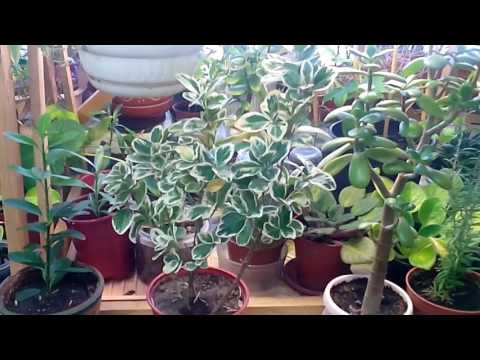

Watch this video on YouTube

